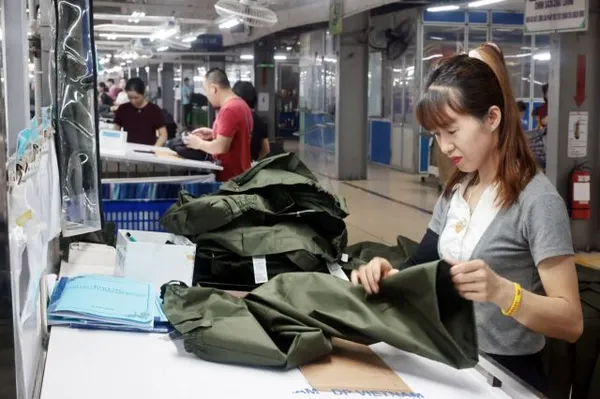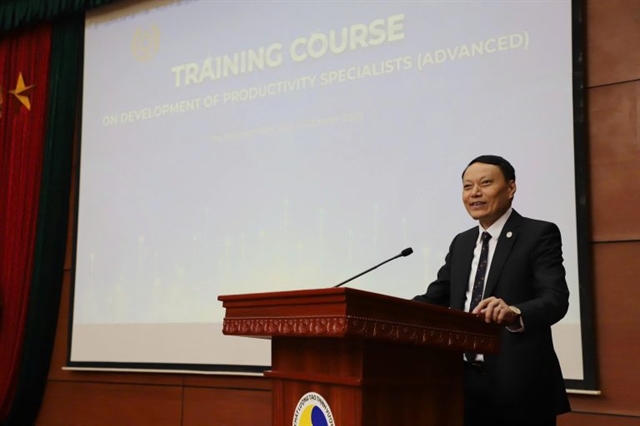 Life & Style
Life & Style

Despite the death of a buffalo owner at Hải Phòng’s traditional buffalo fighting festival in July, anthropologists and tourism experts argued at a conference that the festival should continue and be promoted to tourists.
 |
| Locking horns: The Đồ Sơn buffalo fighting festival always attracts large crowds. — Photo thethaovanhoa.vn |
HÀ NỘI — Despite the death of a buffalo owner at Hải Phòng’s traditional buffalo fighting festival in July, anthropologists and tourism experts argued at a conference that the festival should continue and be promoted to tourists.
The Đồ Sơn buffalo fighting festival dates back to Trần dynasty (1226-1400), when fishermen organized the matches to sacrifice buffaloes to the Sea God to ask for luck and good weather for fishing. The event, which has been organised on every ninth day of the eighth lunar month, has become an occasion for locals and visitors to gather to enjoy the fights as a betting game.
But controversies relating to the treatment of the buffalo, and the incident at the festival in July where a buffalo butted and killed his owner, have spurred calls to ban it. The Ministry of Culture, Sports and Tourism organised a workshop here to discuss the festival and its future.
Prof Tô Ngọc Thanh, chairman of the Việt Nam Folklore Literature and Arts Association, said that the ministry should not ban the traditional event.
“[The death of the buffalo owner in July] only an accident,” he said.“We also cannot rely on opinions from animal protectors to stop such an intangible cultural heritage. They are only one group of people. They interfere a little far into cultural life.”
Researcher Trần Hữu Sơn, vice chairman of the VN Folkore Literature and Arts Association, said locals should be the ones to decide whether to maintain or stop the traditional practice.
Prof Nguyễn Chí Bền, former rector of the National Institute for Culture and Arts Research, compared the buffalo fighting festival to the Phủ Dầy Worship Festival, an important tradition for worshippers of the Mother Goddess, in the northern province of Nam Định.
“We used to ban it, but then recognized it as part of our national culture heritage,” he said. “The buffalo sacrifice festival in the Central Highlands used to be frowned upon, too.”
He noted that traditional festivals that have become controversial in the modern era remain central to the country’s history. In 2004, he was in charge of creating a dossier about the Central Highlands region for a gong cultural space in the area. Despite pressure to exclude images of the buffalo sacrifice ritual, he decided to add them to the collection.
“I thought of the French anthropologist George Louis Condominas [1921-2011], who understood Central Highlands people well,” he said. “He would know that talking about the Central Highlands without mentioning the buffalo sacrifice rituals is cheating.”
Prof Từ Thị Loan, from the same institute, echoed her colleague by saying that many sacrifice rituals continue to be practiced throughout the world. These include a goat sacrifice ritual among Muslims in India and the sport of bullfighting in Spain.
Better adjustment
Prof Thanh suggested better management of the buffalo fighting restival by the local community and authorities to avoid commercializing the event.
“I support the Đồ Sơn people in continuing the festival, but they should improve the organisation of the event,” he said.
Prof Lương Hồng Quang, deputy rector of the institute, said the current practice of buffalo fighting at a large stadium should be distinguished from the traditional event.
“The traditional ritual should be organized at villages, while the event for bigger crowds should be organized more professionally,” he said.
“People specializing in dealing with tourism and services should be in charge of the event for bigger crowds,” he said.
Researcher Sơn said locals could turn the event into a major tourist draw, while preserving the traditional practices. The customs in the villages, from the opening ritual to fighting sessions, should remain central, he said.
Ticket sales will be an important income source, along with supporting services such as food and accommodations at the site.
Researchers agreed that state management is also important, even though the festival is a local community event.
“We should reduce the number of buffalo joining the event,” said Trịnh Thị Thủy, deputy minister of Culture, Sports and Tourism. “The number may be limited to only eight pairs of fighting buffalo. The true significance of the festival does not depend on the scale of the event. We may stick to only one match on the ninth day of the eight lunar month.” — VNS




